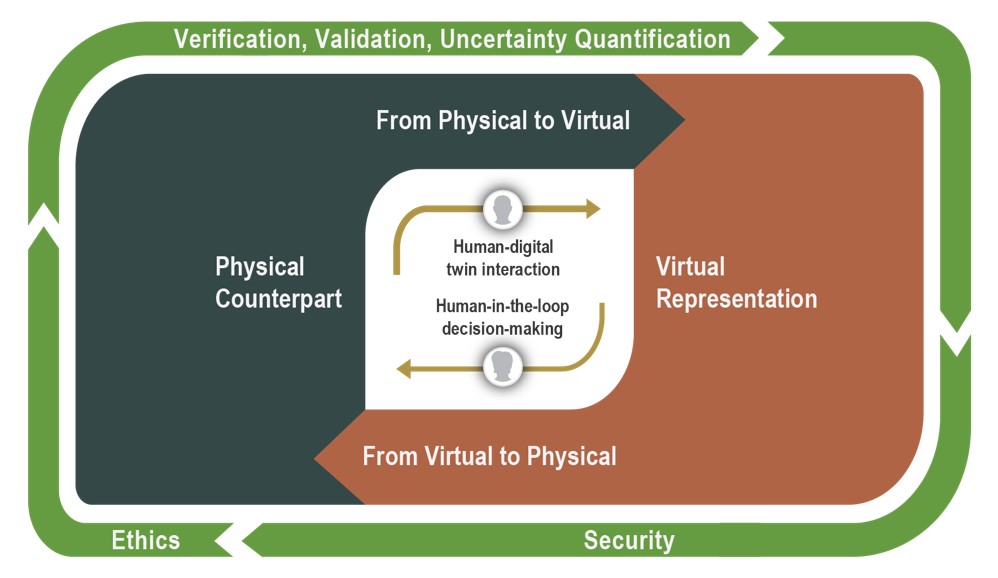Back to 2024 Registration Form
Back to About the 2024 Meeting
The central theme of the 2024 IMAG/MSM Annual meeting is on creating multidisciplinary teams that can meet the challenges to developing biomedical digital twins (BDT) based on the National Academies of Science, Engineering and Medicine (NASEM Report) definition of a digital twin.
NASEM Definition: "A digital twin is a set of virtual information constructs that mimics the structure, context, and behavior of a natural, engineered, or social system (or system-of-systems), is dynamically updated with data from its physical twin, has a predictive capability, and informs decisions that realize value. The bidirectional interaction between the virtual and the physical is central to the digital twin."
The graphic below shows the components of the NASEM defined digital twin.
A description of each component is provided briefly here.
"A Digital Twin is More Than Just Simulation and Modeling"
The NASEM report presents several key challenges for digital twins:
1) “Fit for purpose” problems to address,
2) Verification, Validation and Uncertainty Quantification (VVUQ) of dynamic, interacting virtual and physical assets,
3) Bi-directional, real-time assimilation of measurable data,
4) Interoperability of physical and virtual assets that can be sustained long-term through rapidly changing technologies,
5) Democratizing access of digital twins that are ethical and appropriately used.
Download the report and report resources:
- Full report
- 4-page summary
- Infographic: Digital Twin of a Cancer Patient and Tumor
- Briefing slides from the NASEM study committee on digital twins2.65 MB
“Across multiple domains of science, engineering, and medicine, excitement is growing about the potential of digital twins to transform scientific research, industrial practices, and many aspects of daily life. A digital twin couples computational models with a physical counterpart to create a system that is dynamically updated through bidirectional data flows as conditions change. Going beyond traditional simulation and modeling, digital twins could enable improved medical decision-making at the individual patient level, predictions of future weather and climate conditions over longer timescales, and safer, more efficient engineering processes. However, many challenges remain before these applications can be realized. The report presents critical future research priorities and an interdisciplinary research agenda for the field, including how federal agencies and researchers across domains can best collaborate.”
Listen to in this podcast interview discussing the NASEM Consensus Report on Digital Twins [Many thanks IMAG member, Luke Stoeckel from NIH/NIA for generating this from Google NotebookLM]


